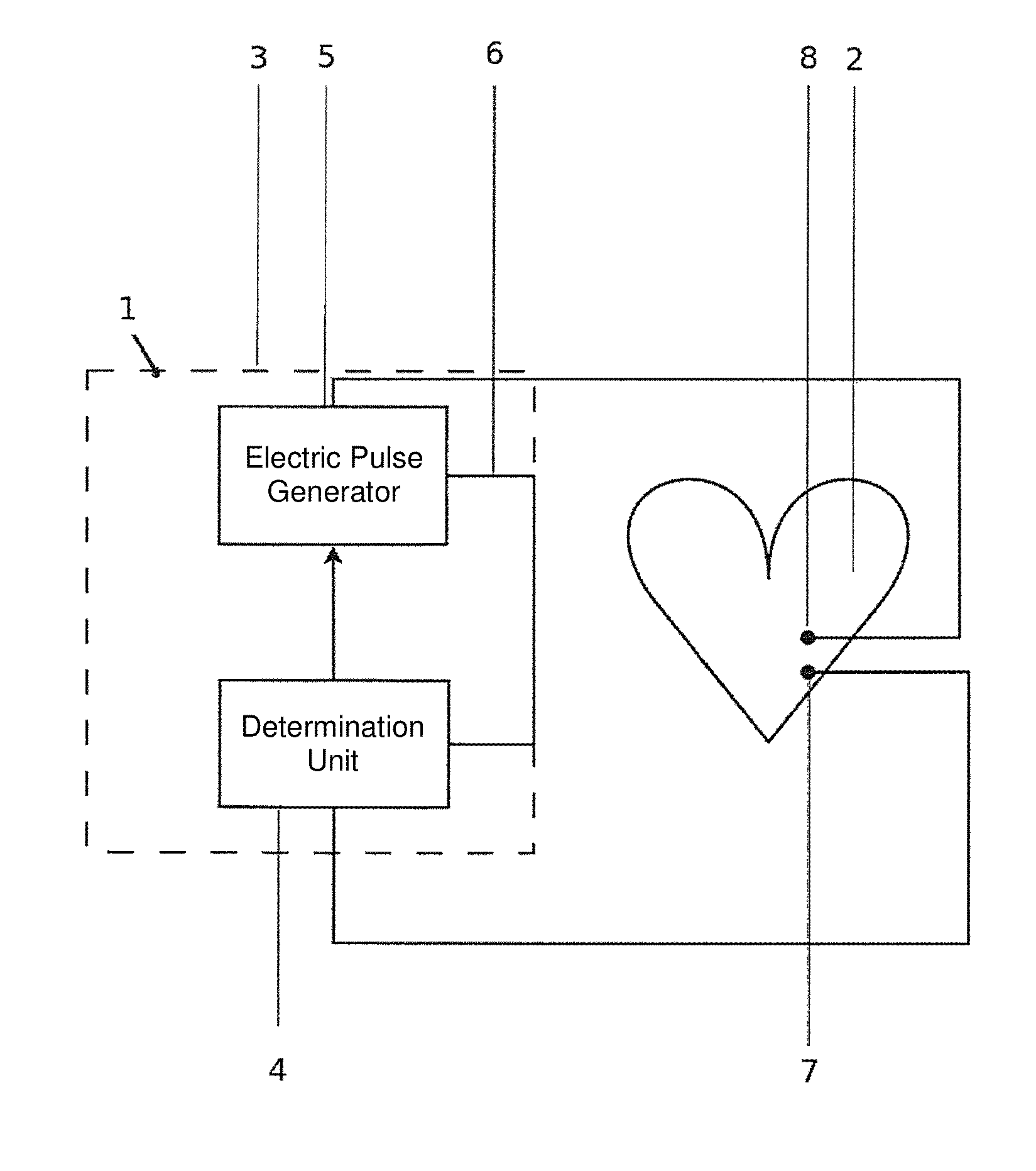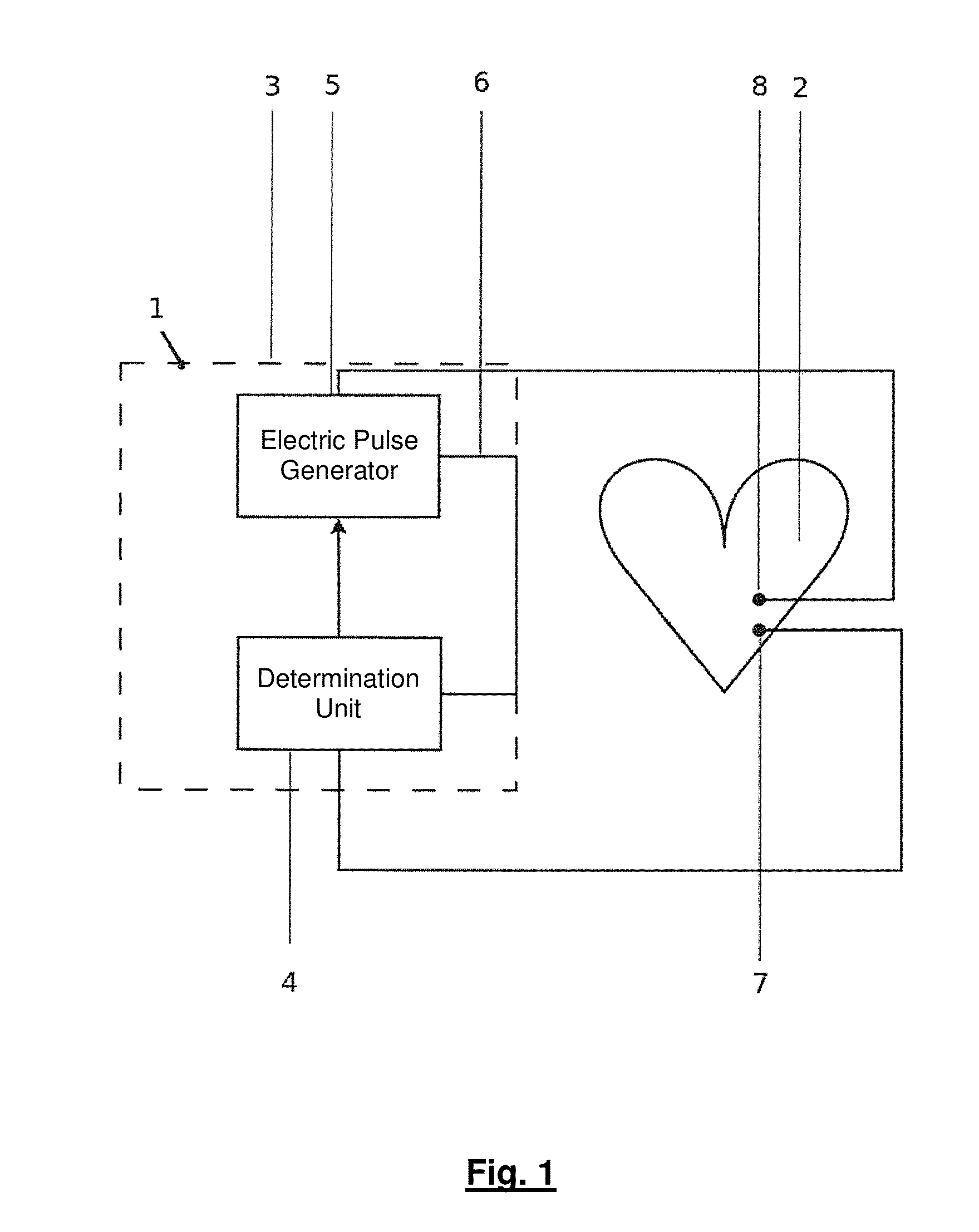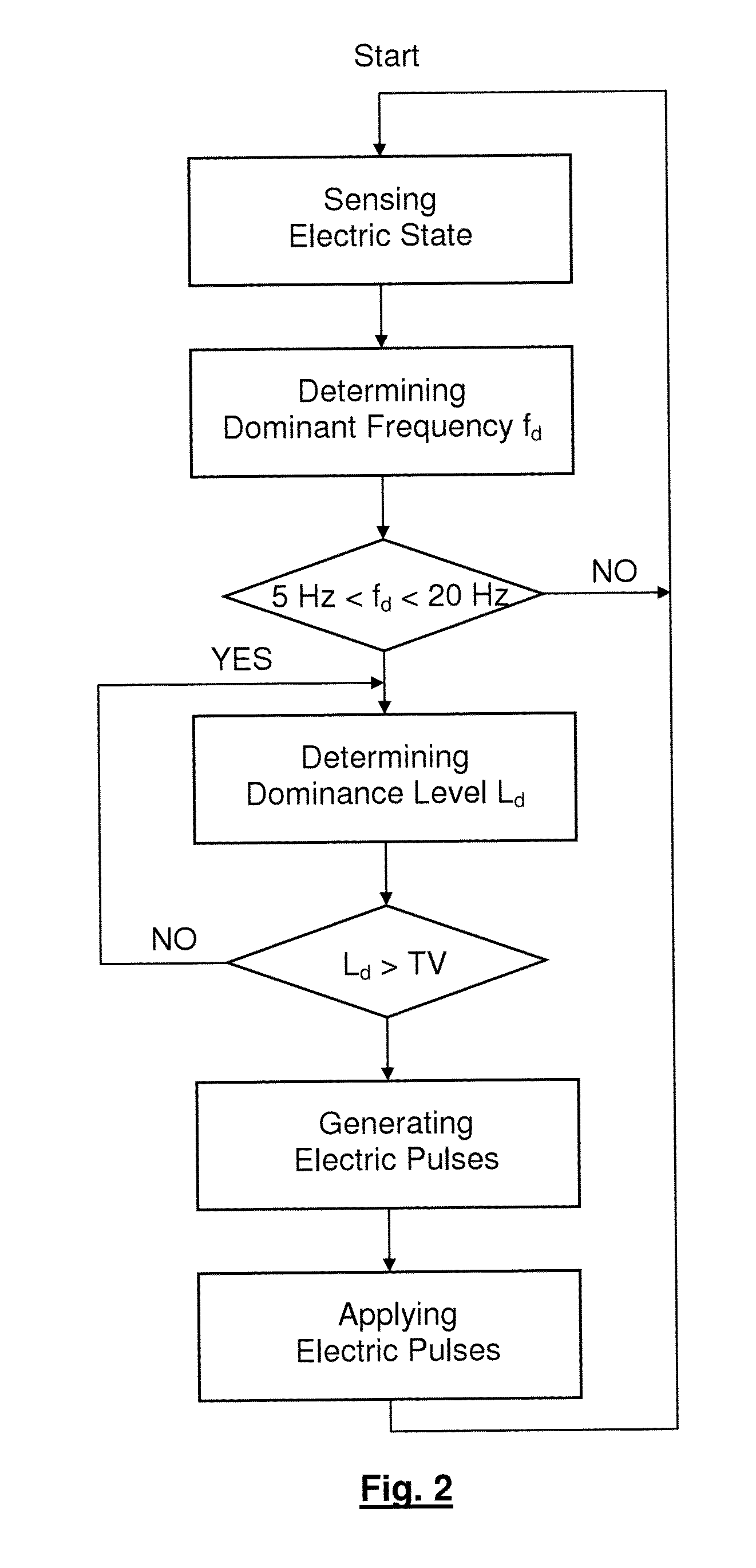Apparatus for and method of terminating a high frequency arrhythmic electric state of a biological tissue
a biological tissue and arrhythmic electric state technology, applied in electrotherapy, heart stimulators, therapy, etc., can solve the problems of limiting the acceptance of implanted defibrillators, unable to terminate high-frequency arrhythmias, and fully developing ventricular fibrillation
- Summary
- Abstract
- Description
- Claims
- Application Information
AI Technical Summary
Benefits of technology
Problems solved by technology
Method used
Image
Examples
Embodiment Construction
[0022]In order to determine a high frequency arrhythmic electric state of a biological tissue the electric state of the biological tissue has to be captured at least with regard to a dominant frequency of the high frequency arrhythmic electric state. This will typically be achieved using a sensor sensing the electric state of the biological tissue which provides an electric signal representative of the electric state of the biological tissue, and using a determination unit determining the dominant frequency from the electric signal.
[0023]From the determined dominant frequency of the present electric state, the determination unit can then determine whether the present electric state is a high frequency arrhythmic electric state of the biological tissue. If a high frequency arrhythmic electric state is determined, at least one series of electric pulses is applied to the biological tissue. An electric pulse generator is provided for generating the at least one series of electric pulses...
PUM
 Login to View More
Login to View More Abstract
Description
Claims
Application Information
 Login to View More
Login to View More - R&D
- Intellectual Property
- Life Sciences
- Materials
- Tech Scout
- Unparalleled Data Quality
- Higher Quality Content
- 60% Fewer Hallucinations
Browse by: Latest US Patents, China's latest patents, Technical Efficacy Thesaurus, Application Domain, Technology Topic, Popular Technical Reports.
© 2025 PatSnap. All rights reserved.Legal|Privacy policy|Modern Slavery Act Transparency Statement|Sitemap|About US| Contact US: help@patsnap.com



